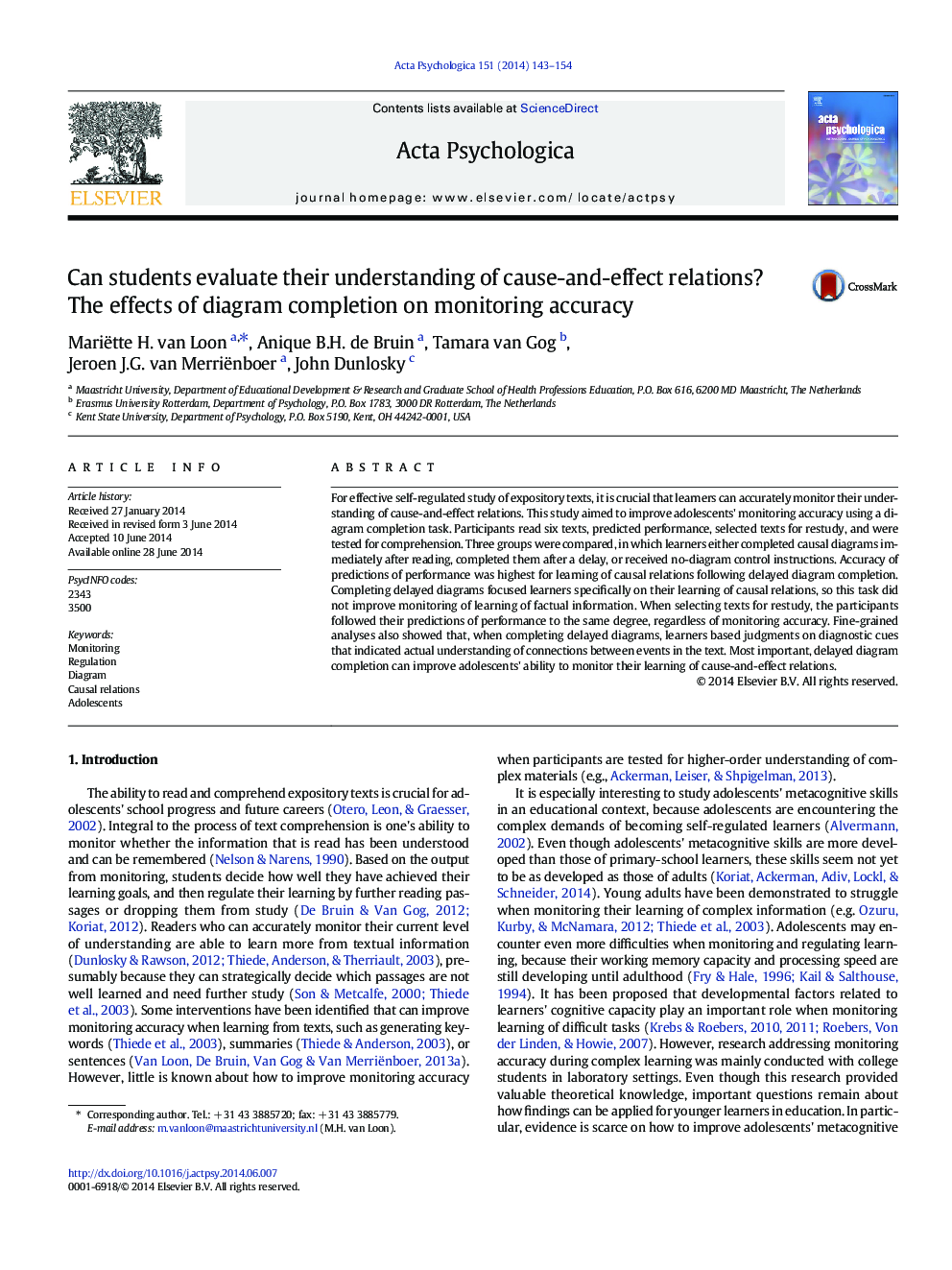| Article ID | Journal | Published Year | Pages | File Type |
|---|---|---|---|---|
| 7277578 | Acta Psychologica | 2014 | 12 Pages |
Abstract
For effective self-regulated study of expository texts, it is crucial that learners can accurately monitor their understanding of cause-and-effect relations. This study aimed to improve adolescents' monitoring accuracy using a diagram completion task. Participants read six texts, predicted performance, selected texts for restudy, and were tested for comprehension. Three groups were compared, in which learners either completed causal diagrams immediately after reading, completed them after a delay, or received no-diagram control instructions. Accuracy of predictions of performance was highest for learning of causal relations following delayed diagram completion. Completing delayed diagrams focused learners specifically on their learning of causal relations, so this task did not improve monitoring of learning of factual information. When selecting texts for restudy, the participants followed their predictions of performance to the same degree, regardless of monitoring accuracy. Fine-grained analyses also showed that, when completing delayed diagrams, learners based judgments on diagnostic cues that indicated actual understanding of connections between events in the text. Most important, delayed diagram completion can improve adolescents' ability to monitor their learning of cause-and-effect relations.
Related Topics
Life Sciences
Neuroscience
Cognitive Neuroscience
Authors
Mariëtte H. van Loon, Anique B.H. de Bruin, Tamara van Gog, Jeroen J.G. van Merriënboer, John Dunlosky,
